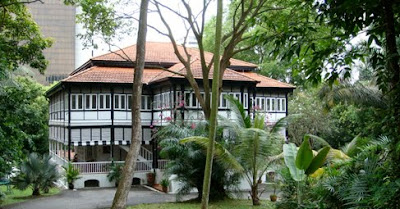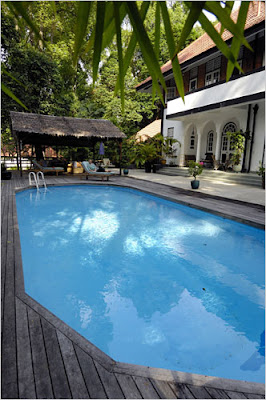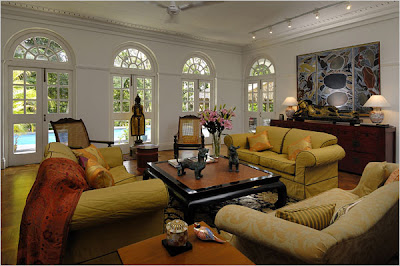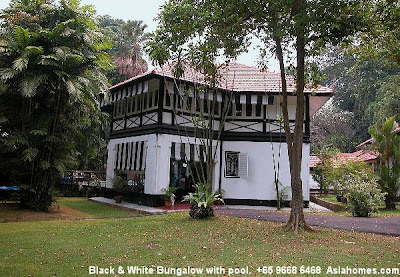

They were generally two story homes, symmetrical in plan, with raised living rooms on stilts that were good in a damp, humid climate. The bottom floor is generally completely open to the outside to allow for natural breezes and ventilation to flow through. The black and white painted grass blinds are built in to keep the monsoon season out! They don’t receive much natural light and have super high ceilings which keeps them cool and the air flowing.
 Images of a ‘done’ black and white: here
Images of a ‘done’ black and white: here

 Images of a ‘done’ black and white: here
Images of a ‘done’ black and white: here
I’ve so enjoyed starting to read about all the famous black and white homes around Singapore. When I lived in Singapore, there was an abandoned Black and White at the end of our road. When Tim and I were high schoolers we used to sneak around inside and thought it was haunted. You can imagine how scary it looked! That home is photographed and talked about in this book! Black and Whites are usually pretty isolated, surrounded by the natural, tropical, jungle foliage. They usually have covered verandas wrapping around the sides.
 Images: here
Images: here
You might remember about 18 months ago when we were traveling through Singapore, I visited a friend in her black and white, and it’s pictured here. I hope you enjoyed my little history lesson, I think these are the most gorgeous homes! I love this architecture style and how well suited it is for a tropical climate.

 Images: here
Images: hereYou might remember about 18 months ago when we were traveling through Singapore, I visited a friend in her black and white, and it’s pictured here. I hope you enjoyed my little history lesson, I think these are the most gorgeous homes! I love this architecture style and how well suited it is for a tropical climate.
